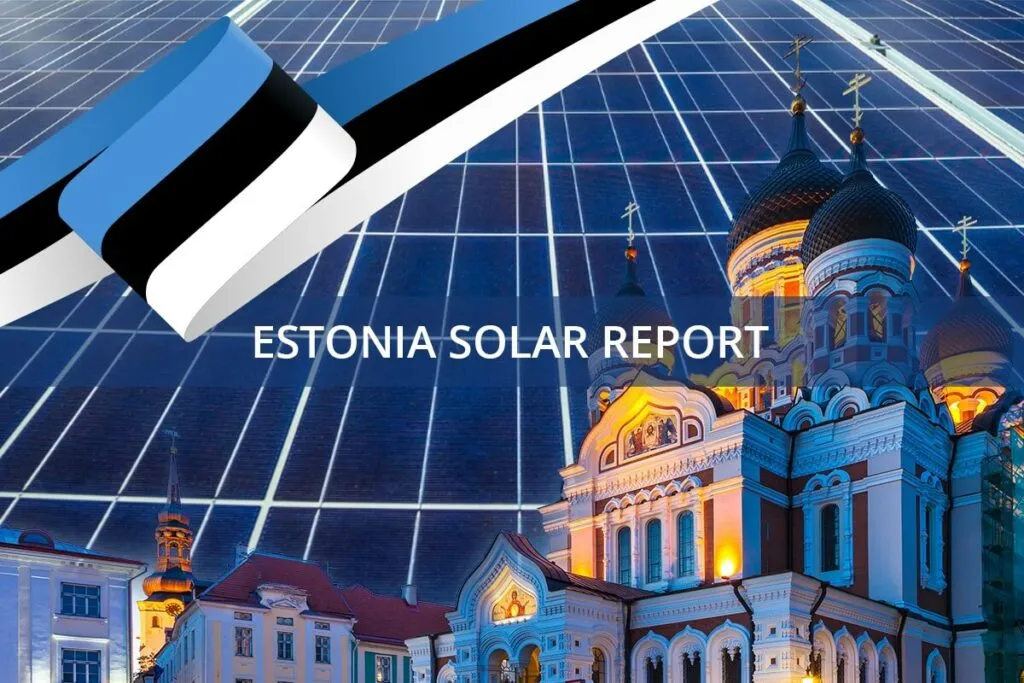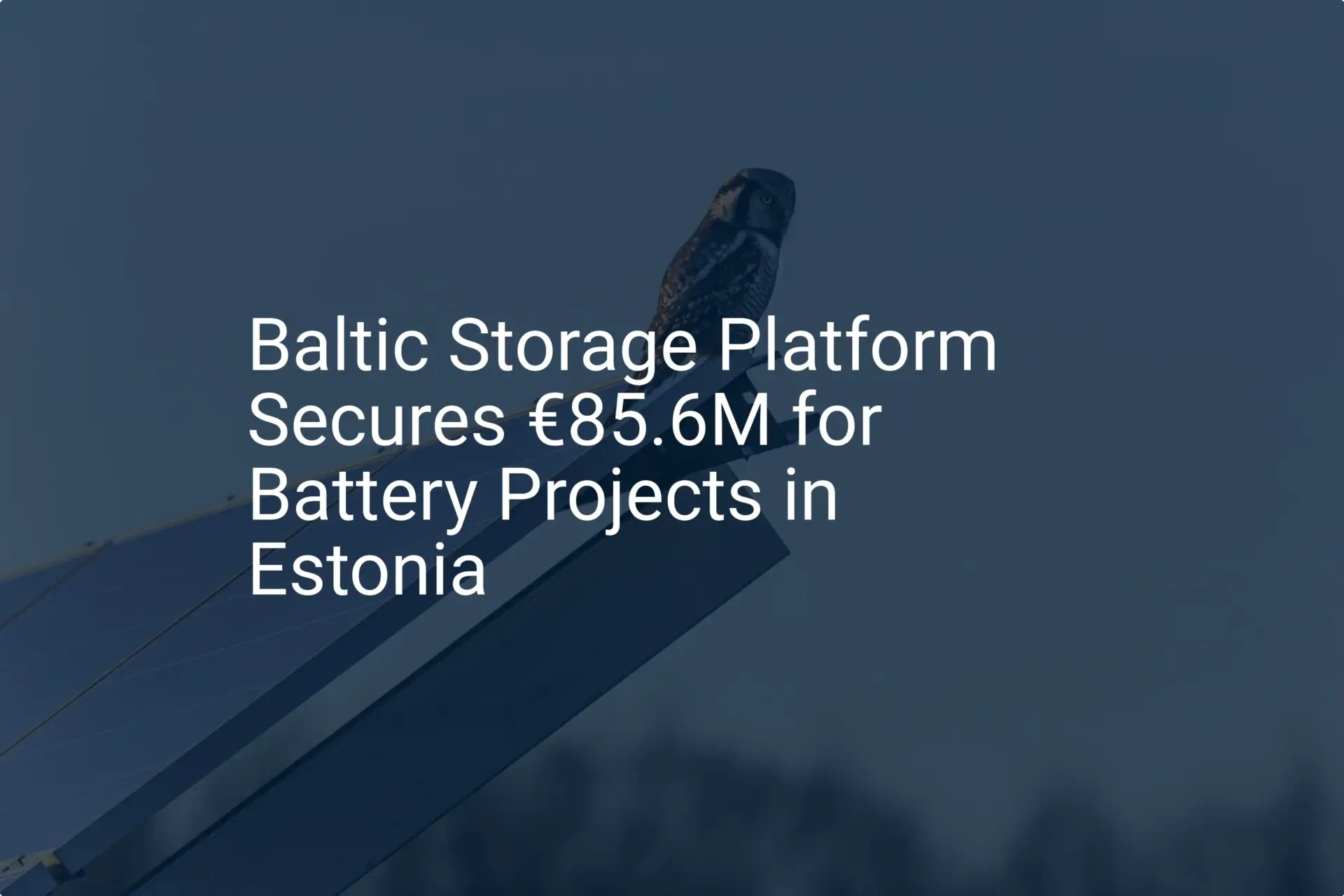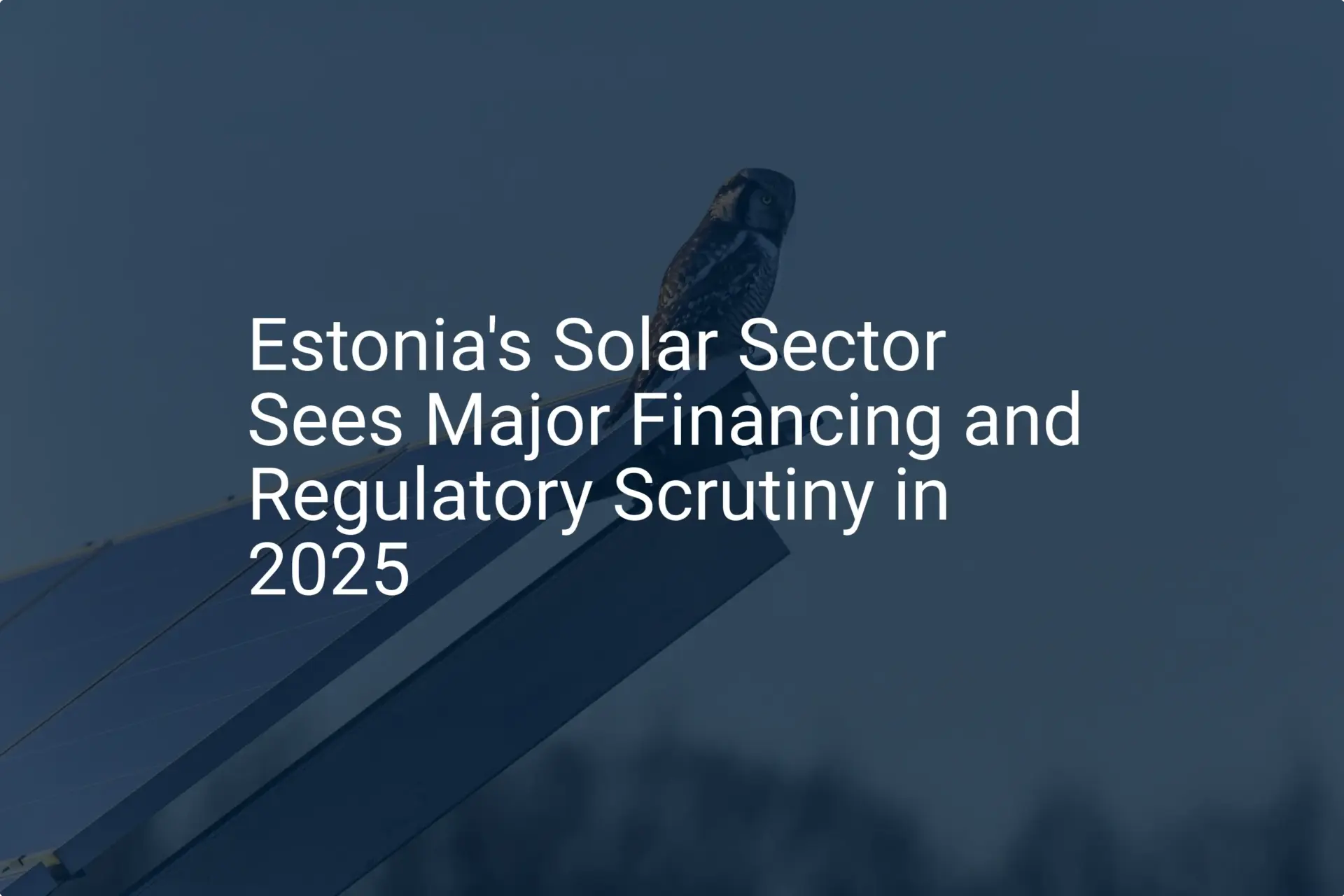For entrepreneurs exploring new industrial ventures, Estonia presents a compelling case. Its commitment to the green transition is more than a policy statement—it’s an economic strategy backed by significant European Union and national funding.
This creates a unique window of opportunity for investors looking to establish capital-intensive projects, such as solar module manufacturing. The question, then, is not whether support is available, but how to best navigate the funding landscape.
This guide offers a clear overview of the key funding mechanisms available for starting a solar factory in Estonia. It’s aimed at business professionals who see the market potential in renewable energy and need a map to the financial instruments that can turn a vision into an operational facility. For those just beginning this journey, understanding the fundamentals of the setup process is a critical first step. A comprehensive overview can be found by exploring how to start solar panel manufacturing.
Understanding the Estonian Funding Landscape for Renewable Energy
Estonia’s financial support system for industrial projects is a blend of national initiatives and substantial EU structural funds. This dual approach ensures that funding aligns with both local economic priorities and broader European Green Deal objectives.
The central institution managing these funds is the Business and Innovation Agency. Formed from the merger of Enterprise Estonia (EAS) and KredEx, this agency is the primary contact for businesses seeking grants, loans, and guarantees. It facilitates investments that enhance Estonia’s economic competitiveness, with a strong emphasis on high-value, sustainable, and innovative industries. For a solar manufacturing project, this agency is the gateway to the most relevant financial support.

Key Funding Instrument: The Just Transition Fund (JTF)
For a large-scale solar module manufacturing plant, the most significant and targeted instrument is the EU’s Just Transition Fund (JTF). This fund is specifically designed to support the economies of regions facing challenges in transitioning away from carbon-intensive industries.
In Estonia, the JTF focuses almost exclusively on Ida-Viru County, a region historically dependent on the oil shale industry. The fund aims to stimulate economic diversification by attracting new investments that create sustainable employment. A solar factory aligns perfectly with this goal.
Key features of the JTF support for investors include:
-
Large-Scale Investment Grants: The fund is structured to support substantial capital expenditures, including the construction of new production facilities and the acquisition of advanced machinery.
-
Job Creation Incentives: Support is directly linked to the creation of new, skilled jobs in the region. A project proposing a 50 MW solar module factory, for instance, could create 50–70 direct employment opportunities, making it a highly attractive candidate for JTF support.
-
Employee Training and Reskilling: Funding can also be allocated to training programs for the local workforce, ensuring the necessary skills are available to operate a modern manufacturing facility.
With its specific regional focus and substantial financial capacity, the JTF represents the premier opportunity for entrepreneurs planning a major solar manufacturing investment in Estonia.
Other Significant EU and National Programmes
While the JTF is the primary vehicle for a large project in Ida-Viru County, other programmes can support different aspects or scales of a renewable energy venture.
EU Recovery and Resilience Facility (RRF)
Established to drive Europe’s recovery from the COVID-19 pandemic, the RRF has a strong focus on green and digital transitions. In Estonia, a key component is the “Green Investment” loan, administered by the Business and Innovation Agency. This instrument is designed for large enterprises with projects that contribute directly to climate objectives. It can serve as a valuable source of debt financing for a solar factory project.
Enterprise Development Programme
This programme targets small and medium-sized enterprises (SMEs) with ambitions for growth, innovation, and export. While less suited for the initial large-scale factory setup, it could be highly relevant for a phased growth strategy or for smaller, specialized manufacturing operations planning to scale over time. It supports activities like product development, process optimization, and international market entry.
Applied Research Programme (RAK)
For ventures that include an innovation component, the Applied Research Programme offers grants for R&D activities. This could be used to fund the development of new solar module technologies or manufacturing processes in parallel with the main production line. It acts as a complementary fund that can enhance a project’s long-term competitiveness.
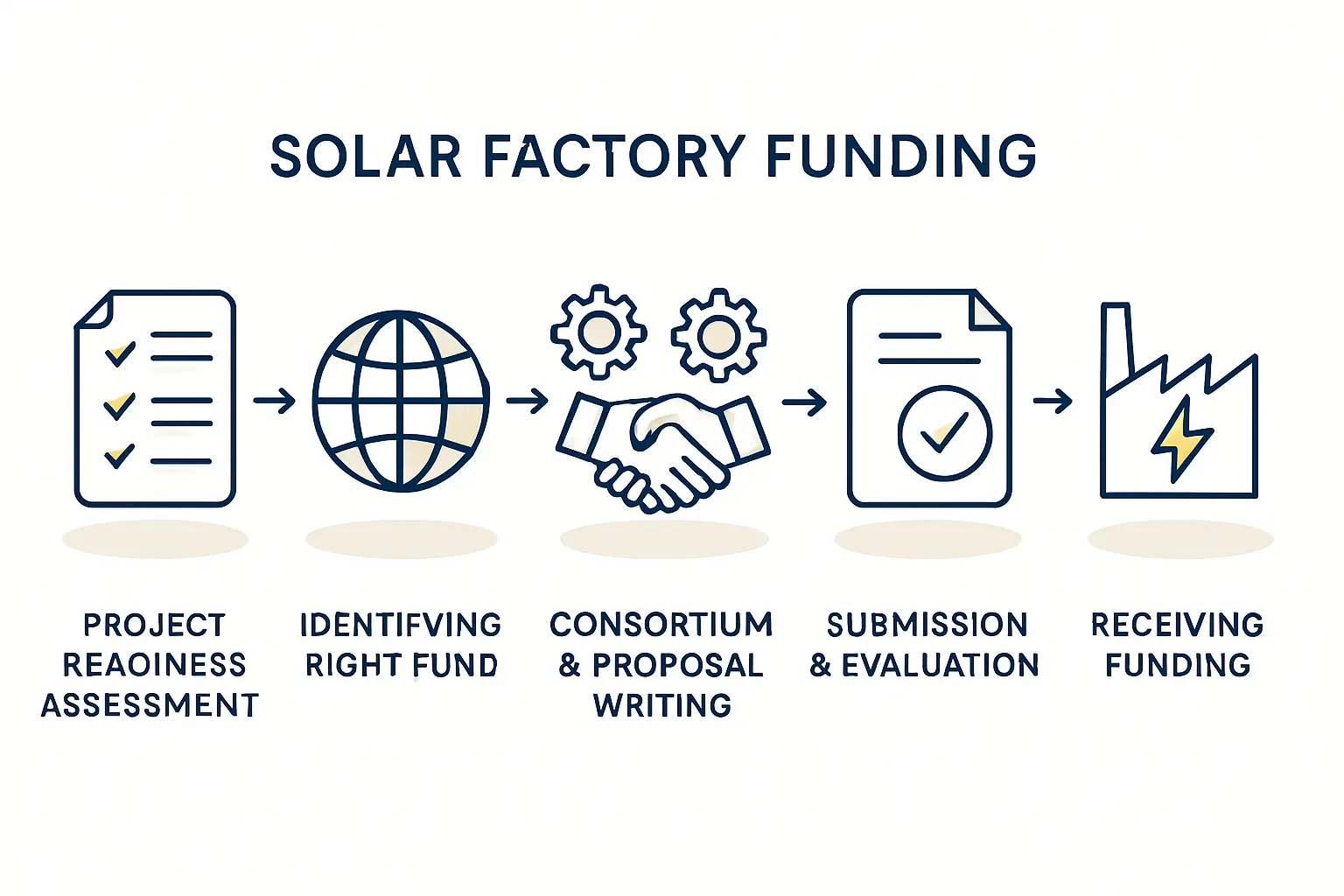
The Critical Role of a Comprehensive Business Plan
Identifying the right funding instrument is only the first step. Securing a grant or loan depends on a high-quality, credible application, and at its core is a robust business plan. Funding bodies need to see a clear, data-driven case that demonstrates technical feasibility, market viability, and sound financial planning.
A thorough solar panel manufacturing business plan must detail every aspect of the proposed operation. This includes market analysis, supply chain logistics, technology choices, production forecasts, and detailed financial projections. Understanding the total investment to start solar panel manufacturing is fundamental, as it forms the basis for the funding request.
Experience from J.v.G. turnkey projects shows that a well-documented plan outlining clear technology choices, offtake agreements, and production targets is crucial for earning the trust of funding bodies like the Business and Innovation Agency.
The application must present a project that is not only financially sound but also professionally managed and technically viable.
Navigating the Application Process: Key Considerations
Successfully navigating the funding process requires a strategic approach. Here are a few key considerations for any applicant.
Engaging with the Business and Innovation Agency Early
Preliminary discussions with the agency are advisable before investing significant resources in a full application. This helps confirm the project’s eligibility, understand the specific nuances of the chosen funding programme, and receive initial feedback on the proposed venture.
Demonstrating Local Economic Impact
For funds like the JTF, the project’s contribution to the local economy is a primary consideration. The application must clearly quantify the expected impact, including the number and quality of jobs created, potential for collaboration with local suppliers, and the project’s role in the region’s long-term economic development.
Aligning with Green Transition Goals
Every application should clearly explain how the solar factory contributes to Estonia’s and the EU’s strategic goals for climate neutrality and energy independence. This means demonstrating how the produced solar modules will aid the transition to renewable energy, reduce carbon emissions, and strengthen the domestic green technology sector.
Frequently Asked Questions (FAQ)
Can a foreign-owned company apply for these grants in Estonia?
Yes. A company owned by foreign nationals can apply for and receive funding, provided it establishes a legal entity (e.g., a private limited company or OÜ) registered in Estonia. The project and its economic impact must be based in the country.
What is the typical success rate for these grant applications?
Success rates vary by programme and the quality of applications. However, projects that are well-prepared, commercially viable, and strongly aligned with the strategic priorities of the fund—such as the JTF’s focus on Ida-Viru County—have a significantly higher probability of success.
Is the funding provided as a direct grant or a loan?
It can be both. The Just Transition Fund primarily offers non-repayable grants for capital investments. Other instruments, like the Recovery and Resilience Facility, may offer favourable-term loans. Some projects use a combination of both to build a complete financing package.
How long does the application and approval process typically take?
The timeline can range from several months to over a year, depending on the complexity of the project and the specific funding programme. This underscores the importance of early and meticulous planning.
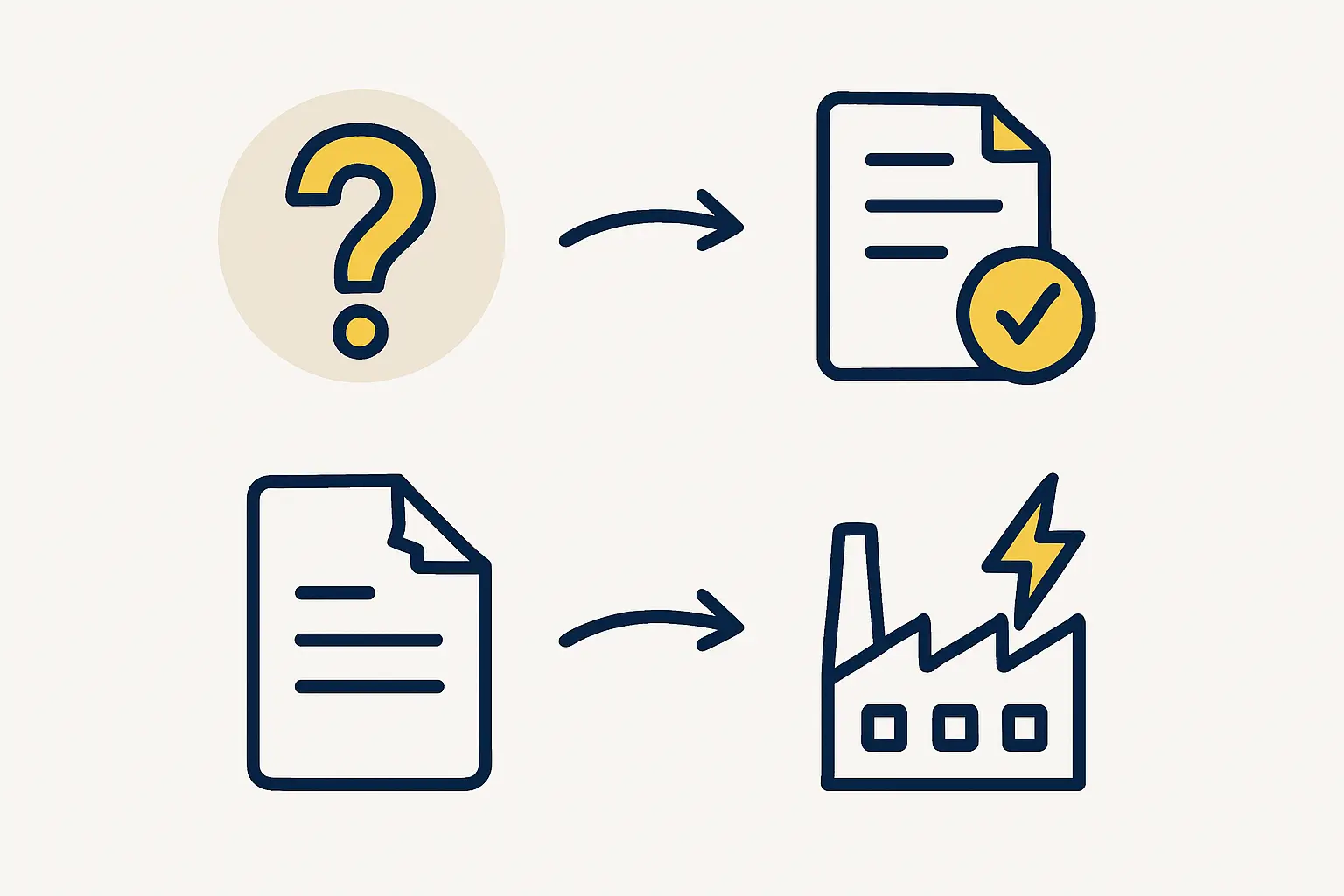
Conclusion: Your Next Steps in Planning
Estonia offers a uniquely supportive and well-structured environment for entrepreneurs looking to enter the solar module manufacturing industry. With substantial funding available, particularly through the Just Transition Fund, the government has created a clear pathway for impactful green technology projects.
Success, however, is not automatic. It results from diligent preparation, a deep understanding of the strategic objectives behind the funding, and a professionally developed business case. To build the foundational knowledge required for such a venture, pvknowhow.com offers structured educational resources to guide entrepreneurs through the entire planning process, from initial concept to an operational factory.

